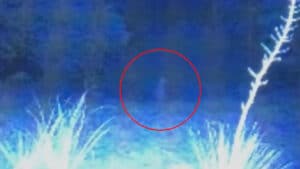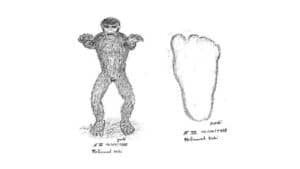Bigfoot, also known as Sasquatch, is a legendary creature that is said to inhabit forests, mainly in the Pacific Northwest region of North America. It is described as a large, hairy, bipedal ape-like creature, standing between 6 to 10 feet tall. Its origins and even existence are hotly debated among Bigfoot hunters and some believe that this elusive creature is actually a descendant of Gigantopithicus from Asia.
Many Bigfoot researchers believe that the creature could be a descendant of Gigantopithecus, an extinct species of ape that lived in Asia around 100,000 years ago. Gigantopithecus was the largest ape that ever lived, standing up to 10 feet tall and weighing up to 1,200 pounds. Its massive size and reported bipedalism have led some to speculate that it could be the ancestor of Bigfoot.
Dr. Jeff Meldrum, a professor of anatomy and anthropology at Idaho State University, believes that Bigfoot could be a descendant of Gigantopithecus. He states that the physical characteristics of Bigfoot, such as its large size and bipedal gait, are similar to those of Gigantopithecus.
The first fossils of Gigantopithecus were discovered in 1935 in a drugstore in Hong Kong. These fossils included a partial jawbone and some teeth. Since then, additional fossils of Gigantopithecus have been found in various parts of Asia, including more jawbones, teeth, and even a few partial skulls. Based on the size and shape of the teeth and jawbones, scientists believe that Gigantopithecus was a very large ape, possibly standing up to 10 feet tall and weighing up to 1,200 pounds.
Secondly, Gigantopithecus is believed to have gone extinct around 300,000 years ago. There is no evidence to suggest that any of its descendants survived until modern times.
Some Bigfoot researchers reject the idea that Bigfoot is actually a Gigantopithicus however. One reason is that the physical characteristics of Gigantopithecus do not match the reported sightings of Bigfoot. For example, Gigantopithecus is believed to have had a protruding jaw and relatively small brain, while Bigfoot sightings often describe a more human-like face and larger brain.
Additionally, DNA analysis of supposed Bigfoot samples has not shown any connection to Gigantopithecus or any other known primate species. This lack of genetic evidence makes it difficult to support the theory that Bigfoot is a descendant of Gigantopithecus.
OTHER NAMES FOR BIGFOOT AROUND THE WORLD
Based on the available evidence, it is clear that Gigantopithecus was a real species of ape that lived in Asia millions of years ago. Its size and physical characteristics make it a plausible candidate for the ancestor of Bigfoot.
However, until more concrete evidence is found, it is impossible to say for certain whether the Yeti or Bigfoot is a descendant of Gigantopithecus or not. Further research and exploration in the field of cryptozoology may shed more light on this fascinating topic in the future.











